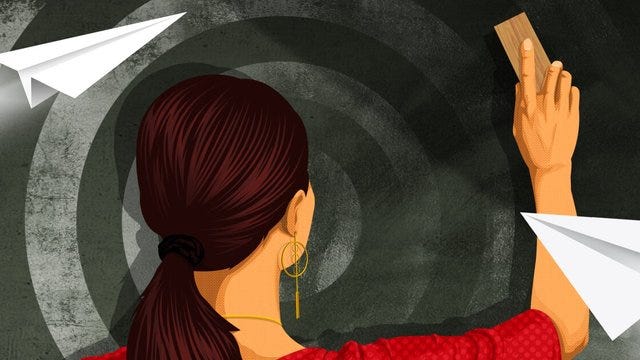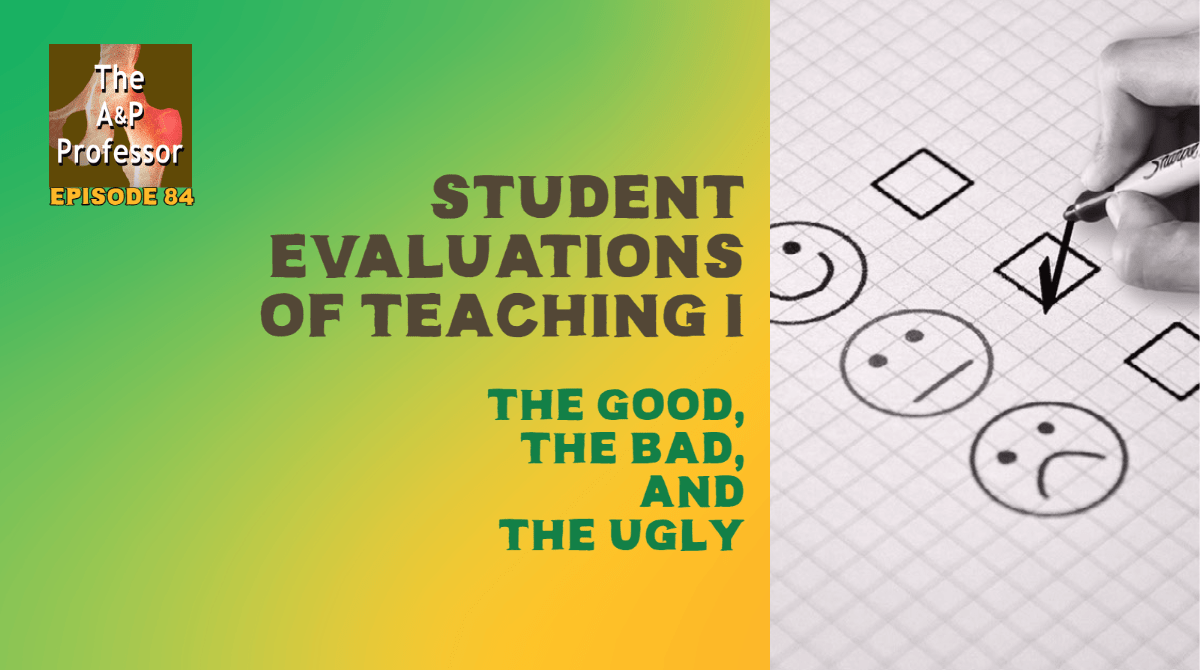Sci-Ed Update 278
Calling ourselves "Doctor," CRISPR cures, Deer→Human COVID spread?, harmful teaching evaluations, "hearing" silence, "milking" umbilical cords, & more!
Should nurses with doctorates be called doctor? Lawsuit targets Calif. rule.
After 14 years in the classroom earning several degrees, Jacqueline Palmer wants to call herself a doctor.
The Lancaster, Calif., nurse practitioner earned a doctorate of nursing practice, the highest degree available in her field, from Chamberlain University. Until last year, Palmer introduced herself as a doctor to her patients, signed her name with “Dr.” and had the prefix embroidered in purple before her name on her clinician’s jacket.
Then Palmer learned that might have been enough to sink her career. In November, prosecutors announced that Sarah Erny, another California nurse practitioner with a doctorate, would pay almost $20,000 in a civil settlement for allegedly describing herself as a doctor on professional websites and social media.
Several states regulate the use of the “doctor” title, but California’s law is the strictest in the country, said Donna Matias, the attorney representing Palmer and her co-plaintiffs. It restricts any person from using the word “doctor” or the prefix “Dr.” in signs or advertisements without having a valid certificate as a physician or surgeon.
“If you read the law literally, it appears to prohibit even PhDs and university professors from using the title,” Matias said. [boldface added to quote]
Kevin Patton comment→ Read that last part again. Here’s where all those years of Latin study come in handy for me… Doctor means “teacher,” and only later became associated with physicians …if you want to get technical and legalistic.
Read more→ AandP.info/tf7
How CRISPR therapy could cure everything from cancer to infertility
The imminent approval of the world's first CRISPR treatment for sickle cell disease is just the start: soon this gene-editing tool could be used to tackle everything from cancer to high cholesterol and infertility
Many studies involve using CRISPR for research: detecting viruses, say, or recording cells’ activities. But it is no longer restricted to labs. In some countries, people are already eating CRISPR-edited plants and animals – and in 2018, it was announced that three genetically modified children had been born in China. Their genes were edited using CRISPR technology at the embryonic stage by scientist He Jiankui in an effort to prevent them contracting HIV from their fathers (see “Editing eggs and sperm”). Jiankui was jailed for his actions.
Most remarkably, more than 75 clinical trials involving CRISPR are under way or have already been completed. This is a phenomenal achievement as new medical technologies typically take several decades to develop to the point where they are ready to try on people.
“These gene-editing therapies are really exciting in the near term and I think are going to change people’s lives for the better in a lot of important ways,” says bioethicist Kelly Ormond at Stanford University in California.
Around half of these trials involve treating cancer. The idea here is generally to take immune cells from a person with cancer, edit them to be better at attacking the cancer and replace them in the body.
Read more→ AandP.info/xcf
Teaching Evaluations Are Racist, Sexist, and Often Useless
…So I raised the matter in a faculty meeting. “How can we ethically, much less legally, use student evaluations as a basis for our merit reviews?” As usual, be careful raising an issue in a faculty meeting: I was asked to come back with research on the matter.
I found almost 80 peer-reviewed papers demonstrating the gender and racial bias afflicting teaching evaluations, going back to 1979. Study after study showed increasingly disturbing statistics: Women were routinely rated lower than men, younger women were evaluated as less professional than their older female or male counterparts, women of color were rated as less effective than white women, and so on.
A few particularly stunned me. In a meta-analysis of 126 data-rich studies, Rebecca Kreitzer and Jennie Sweet-Cushman (2021) was able to find that — surprise! — evaluations were higher for courses with less work, for electives, and for classes where cookies or chocolate were provided to students. Bob Uttl, Carmela A. White, and Daniela Wong Gonzalez (2017) reviewed previous studies and reanalyzed their data to show “no significant correlations between … ratings and learning.” These biased and ineffective tools have been affirmed by professional organizations and highly ranked universities.
In 2019, the American Sociological Association issued a formal recommendation to cease using student evaluations for merit and promotion decisions unless part of a much broader (“holistic”) assessment. In reaching its conclusion, the ASA not only identified bias based on gender and sex, but also on such seemingly innocent factors as the time of day a course was taught.
Read more→ AandP.info/s5w
Student Evaluations of Teaching I:
The Good, The Bad, and The Ugly
Student evaluations of teaching (SETs) are problematic in many ways—but perhaps useful in other ways. Host Kevin Patton discusses the good, the bad, and the ugly. What are the issues and what’s behind those issues?
To listen to this episode, click on the player (if present) or this link→ theAPprofessor.org/podcast-episode-84.html
00:47 | Student Evaluation of Teaching (intro)
02:28 | Share the Fun: Refer & Earn
05:37 | The Good
08:39 | Sponsored by AAA
10:12 | The Bad
26:10 | Sponsored by HAPI
28:13 | The Ugly
44:15 | Sponsored by HAPS
45:26 | Staying Connected
Student Evaluations of Teaching II:
Proactive, Active, and Reactive Strategies
Host Kevin Patton continues the discussion about student evaluations of teaching (SETs) with a set of strategies to make them work better, or at least mitigate some of the potentially bad or ugly outcomes. There are things we can do proactively before a SET, actively during a SET, and reactively after a SET. Listen to hear them all!
To listen to this episode, click on the player (if present) or this link→ theAPprofessor.org/podcast-episode-85.html
00:00 | Quotation
00:57 | Student Evaluation of Teaching: Part II
04:16 | Sponsored by AAA
05:39 | Proactive Strategies
12:49 | Sponsored by HAPI
14:03 | Active Strategies
29:52 | Sponsored by HAPS
31:18 | Reactive Strategies
46:15 | Cookies!
48:00 | Staying Connected
World's first completely open- and crowd-sourced neuroscience experiment launched
Today, scientists from the Allen Institute for Neural Dynamics, a division of the Allen Institute, launched the world's first completely open- and crowd-sourced neuroscience experiment-;inviting researchers from around the world to publicly design a shared experiment that will run on the Allen Brain Observatory, as part of the Institute's OpenScope program. Experiments will probe the dynamic functions of the brain and how cells interact and communicate to produce thoughts and actions and shed light on how we make complex decisions.
Any scientist is now able to join the public forum (https://community.brain-map.org) and suggest research questions and experimental methods to be discussed amongst the community. The community will then vote to select one OpenScope project to be conducted by the Allen Institute. Every phase of design, implementation, and data output will be completely open.
The goal is to maximize impact by turning to the combined talent and insight of the broader international neuroscience community. The experiment that is chosen by the community will use two-photon imaging in behavioral tasks, as part of the OpenScope program's Allen Brain Observatory, to shed light into how the brain operates.
Read more→ AandP.info/ewu
Echoes of Absence: Study Suggests We Can ‘Hear’ Silence
Summary: A novel study suggests that silence can indeed be ‘heard.’ Philosophers and psychologists, using auditory illusions, demonstrated how silence distorts our perception of time, much like sounds do.
The study indicates that the brain perceives and processes silence in a manner similar to sounds. The research establishes a novel method to study the perception of absence, broadening the scope for future exploration in the realm of sensory perception.
Key Facts:
Using auditory illusions, the researchers demonstrated that moments of silence can distort our perception of time, similar to sounds.
The study concluded that silence is ‘perceived’ in a similar way to sounds, suggesting that we can ‘hear’ silence.
The researchers plan to extend their investigation into the perception of absence, including visual disappearances and the possibility of hearing silences not preceded by sound.
Source: Johns Hopkins University
Read more→ AandP.info/n9k
Transmission of SARS-CoV-2 in free-ranging white-tailed deer in the United States
SARS-CoV-2 is a zoonotic virus with documented bi-directional transmission between people and animals. Transmission of SARS-CoV-2 from humans to free-ranging white-tailed deer (Odocoileus virginianus) poses a unique public health risk due to the potential for reservoir establishment where variants may persist and evolve.
We collected 8,830 respiratory samples from free-ranging white-tailed deer across Washington, D.C. and 26 states in the United States between November 2021 and April 2022. We obtained 391 sequences and identified 34 Pango lineages including the Alpha, Gamma, Delta, and Omicron variants.
Evolutionary analyses showed these white-tailed deer viruses originated from at least 109 independent spillovers from humans, which resulted in 39 cases of subsequent local deer-to-deer transmission and three cases of potential spillover from white-tailed deer back to humans. Viruses repeatedly adapted to white-tailed deer with recurring amino acid substitutions across spike and other proteins.
Overall, our findings suggest that multiple SARS-CoV-2 lineages were introduced, became enzootic, and co-circulated in white-tailed deer.
Kevin Patton comment→ Yikes.
Read more→ AandP.info/k0h
‘Milking’ umbilical cords may help some sickly newborns

Giving birth to child who is unresponsive or struggling to breathe is a harrowing experience. The medical team must quickly cut the umbilical cord and then rush the baby to aid. But taking a few seconds to squeeze blood from the cord into an infant’s abdomen before cutting the cord could help with the infant’s recovery, two recent studies suggest.
The practice, known as umbilical cord milking, is relatively unknown and not without some controversy. But if its promise holds up, it may help protect some of the most at-risk newborns, researchers say.
During fetal development, the umbilical cord brings nutrients from the placenta, which also serves as a reservoir for blood, iron and stem cells (SN: 4/4/18). At birth, the infant is still connected to this reservoir, and the standard recommendation is to wait at least 30 seconds to a minute before clipping that connection, allowing the baby to take in more of those essential nutrients.
Some studies suggest that for healthy babies, delayed cord clamping can improve some aspects of health, such as iron levels or fine motor skills, for months or even years.
For babies born with urgent health problems, however, there’s no time to wait. In these cases, quickly milking the cord might provide similar benefits as delayed cord clamping. But the jury is still out on if or when to use the technique.
Read more→ AandP.info/pmz









